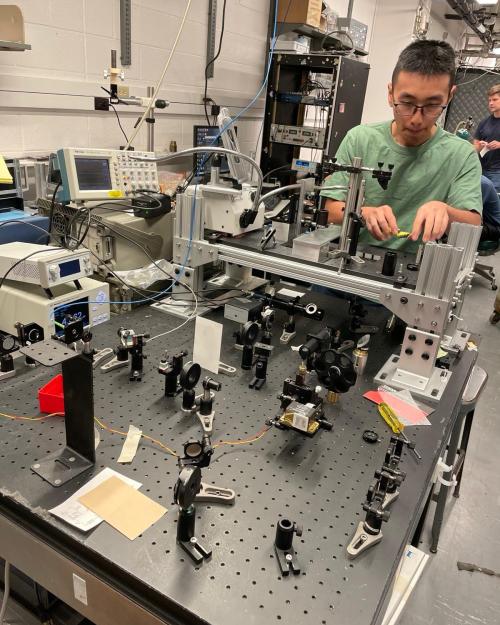Faculty from Cornell Neurotech shared stories of technologies and tools they have developed in their first year of operation at a Reunion 2017 panel, “Unlocking the Brain: Cornell’s Search for the Key.”
The June 9 discussion featured Joseph Fetcho, director of Cornell Neurotech and professor in the Department of Neurobiology and Behavior; and Chris Xu, M.S. ’93, Ph.D. ’96, the Mong Family Foundation Director of Cornell Neurotech and a professor in the Department of Applied and Engineering Physics.
“In the first year alone, Cornell Neurotech is already realizing many newfound research collaborations,” said Gretchen Ritter ’83, the Harold Tanner Dean of Arts and Sciences. “These multidisciplinary partnerships have developed several key advances in our understanding of the brain and in the tools we can use to further decode its mysteries.”
Cornell Neurotech – a joint initiative of the College of Engineering and the College of Arts and Sciences – launched with a multimillion dollar seed grant from the Mong Family Foundation, through Stephen Mong ’92, MBA ’02, MEN ’93. The initiative aims to build tools that enable scientists to better understand and treat disorders such as Alzheimer’s disease, Parkinson’s disease, autism, epilepsy, schizophrenia and depression.
Fetcho brought the presentation to a personal level by sharing videos of his mother, who no longer recognizes her children. He said research into diseases like hers needs to answer questions such as: Have the nerve cells in his mother’s brain died? If not, where are they? Have their connections been damaged? Has the pattern of activity in the brain changed?
To find the answers, scientists are developing tools to look deep into the brain with high-resolution imagery, to look at neurons as they fire, as they search for connections, as they gain and lose synapses – and to try to connect that brain activity to various behaviors and conditions, he said.
Fetcho’s lab does brain research using young zebrafish, whose transparency is a huge advantage in viewing brain activity.
Transferring this research from transparent fish to mammals has been one of the challenges given to Xu, who is developing tools and techniques that see deep into the brains of mice and can image several different regions of the brain at the same time.
“Our Laboratory for Innovative Neurotechnology at Cornell is using technology to enable answers to currently impossible neuroscience questions,” Xu said.
Along with support for labs and research, one feature of Cornell Neurotech is the Mong Fellowship Program, which pairs life scientist postdocs with postdocs in engineering, physics or chemistry to work together on a pressing problem.
“We haven’t solved the brain yet, but we have done some remarkable things with respect to tools to understand it,” Fetcho said of the first year’s progress.
Lance Collins, the Joseph Silbert Dean of Engineering, said the neurotech initiative began, and will continue to grow, because of the natural curiosity and collaboration of Cornell faculty.
“This idea nucleated through interactions happening within the faculty and was taken to the next level by an outstanding alumni gift,” Collins said. “Faculty did this because they were genuinely and intrinsically interested in the problem, so they brought their expertise together. That’s how we do it here.”
This story also appeared in the Cornell Chronicle.




